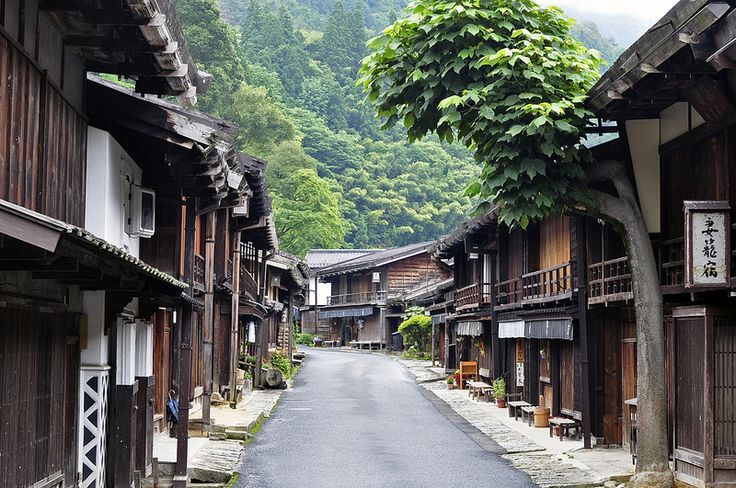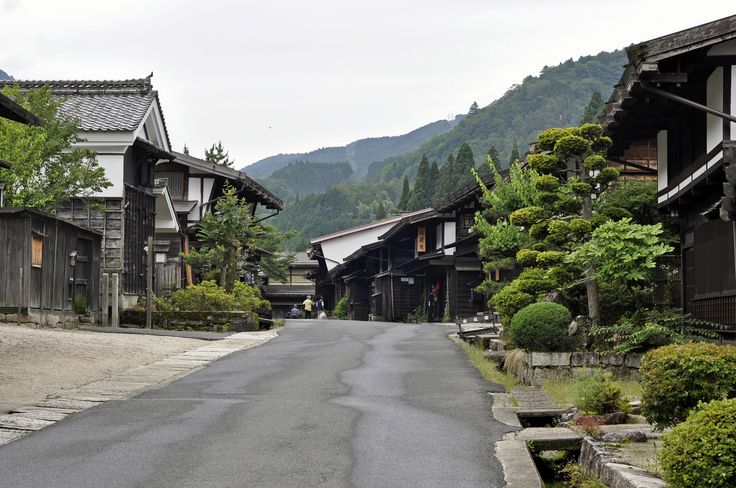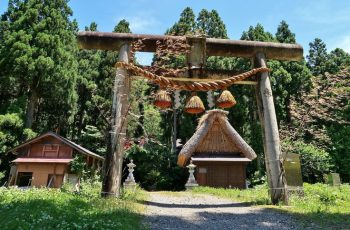The train journey from Nagoya had been a gradual shedding of modernity. As Kenji, a historian with a particular fascination for the Edo period, stepped onto the platform at Nagiso station, the air itself felt different – crisper, cleaner, carrying the faint scent of pine and damp earth. He was on the cusp of Tsumago-juku, a meticulously restored post town nestled in the Kiso Valley of Nagano Prefecture, a jewel on the historic Nakasendo Trail. His anticipation was a palpable hum, a scholar’s eagerness to walk in the literal footsteps of history.
A short bus ride, then a final approach on foot, and the transformation was complete. He passed a subtle marker, and suddenly, the 21st century receded as if behind a curtain. Before him lay a street that seemed to have been lifted directly from a Hiroshige woodblock print. This was Tsumago-juku. The most striking initial impression was the quiet, a profound stillness broken only by the murmur of a nearby stream, the distant chirping of birds, and the soft scuff of his own shoes on the well-trodden path. And then he noticed it – or rather, the absence of it: cars. The town center was a pedestrian-only zone, a deliberate choice made decades ago by the villagers to preserve the authentic atmosphere of an Edo-era post town. This single, bold decision was the cornerstone of Tsumago’s immersive magic.

The main street, flanked by over forty traditional wooden buildings, curved gently through the small valley. The architecture was a harmonious blend of dark, weathered wood, latticed windows (koshi-do), and projecting upper stories (tsushi-nikai). Many were minshuku (guesthouses), artisan shops, small eateries, and museums, but they weren’t garish tourist traps. They felt integral, their signage discreet, often beautifully hand-painted on wooden boards (kanban). There were no visible power lines or telephone poles; like its spiritual cousin Ouchi-juku, Tsumago had buried these modern necessities to maintain its historical integrity, a costly but invaluable commitment.
Kenji’s lodging was a venerable minshuku called Matsushiro-ya, a building that had welcomed travelers on the Nakasendo for centuries. Stepping inside was like entering a time capsule. The scent of aged wood, tatami mats, and the faint, lingering aroma of woodsmoke from the irori (sunken hearth) enveloped him. His host, Mr. Tanaka, a man whose quiet dignity seemed to emanate from the very timbers of the house, greeted him with a traditional bow.
“Welcome to Tsumago-juku, Kenji-sensei,” Mr. Tanaka said, his voice a low rumble. “May you find the spirit of the Nakasendo still alive here.”
And indeed, the spirit of the Nakasendo, the “road through the central mountains” that once connected Edo (Tokyo) and Kyoto, was palpable. This wasn’t just a preserved town; it was a preserved experience. Kenji could almost hear the ghostly echoes of feudal lords (daimyo) and their samurai retinues, weary merchants leading packhorses laden with goods, itinerant monks, and common travelers who once thronged this very street. Tsumago, along with its neighbor Magome, had been a vital shukuba, or post station, providing food, lodging, and fresh horses for those undertaking the arduous journey.

Over the next few days, Kenji immersed himself in Tsumago. He walked the length of the town countless times, each pass revealing new details: the intricate wooden joinery of the buildings, the subtle variations in rooflines, the small shrines tucked into alleyways, the carefully tended gardens blooming with seasonal flowers. He visited the Honjin, the principal inn reserved for high-ranking officials, and the Waki-Honjin, the secondary inn. Both were now museums, meticulously restored to showcase the lifestyle of their Edo-period inhabitants. He marveled at the spacious tatami rooms, the sliding paper screens (fusuma) adorned with delicate paintings, the austere beauty of the tea ceremony rooms, and the functional efficiency of the kitchens with their rows of iron cooking pots.
The absence of cars was transformative. It altered not just the visual landscape, but the auditory one as well. Sounds that would normally be drowned out by traffic – the gurgle of water in the stone-lined channels running beside the road, the rhythmic clack of a weaver’s loom from an open window, the distant clang of a blacksmith’s hammer from a restored forge – became prominent, weaving a rich soundscape of pre-industrial life. It also changed the pace. People strolled, they ambled, they paused to chat. There was no rush, no honking horns, no frantic energy. Time itself seemed to slow down, aligning with the more deliberate rhythms of the past.
Kenji learned about the “Tsumago Sengen,” a pioneering conservation charter adopted by the residents in the 1970s. Faced with decline as modern transportation bypassed the old Nakasendo, the villagers made a collective decision: “We will not sell, we will not rent, we will not destroy.” This unwavering commitment was the foundation of Tsumago’s remarkable preservation. It wasn’t imposed from outside; it was a grassroots movement born of a deep love for their heritage.
He spoke with local artisans. In one shop, an elderly craftsman patiently carved intricate wooden combs (tsuge-gushi) from boxwood, a traditional Kiso Valley craft. In another, a woman wove beautiful textiles using natural dyes derived from local plants. These weren’t just souvenirs; they were tangible links to centuries of skill and tradition. He bought a small, hand-carved koma (spinning top) for his nephew, feeling the weight of the craftsman’s dedication in its simple form.
One of the highlights of Kenji’s visit was walking a section of the Nakasendo Trail itself, from Tsumago to Magome. The path, often paved with original Edo-period cobblestones (ishidatami), wound through dense forests of hinoki cypress and cedar, past small farms, and over picturesque stone bridges. He imagined the travelers of old, their straw sandals (waraji) slapping against these same stones, their kimonos perhaps damp with mist, their minds focused on the next post town, the next meal, the next night’s rest. He passed “resting places” (tateba) where teahouses once stood, and stone Jizo statues, protectors of travelers, adorned with small offerings. The experience was deeply meditative, connecting him not just intellectually, but physically, to the past. The only sounds were the rustling leaves, the calls of unseen birds, and his own breathing. It was on this trail, far from any modern noise, that the true essence of the Nakasendo came alive.
Back in Tsumago, evenings were particularly magical. As dusk settled, paper lanterns (andon) outside the inns and shops would be lit, casting a warm, flickering glow on the wooden facades. The streets, already quiet, would become even more tranquil. The aroma of cooking food – grilling fish, simmering miso soup – would drift from the houses. Kenji would often sit on the engawa (veranda) of Matsushiro-ya, sipping green tea, watching the shadows lengthen, feeling a profound sense of peace.

Mr. Tanaka shared stories of Tsumago’s past, tales passed down through his family. He spoke of the strict regulations governing post towns during the Edo period, the importance of maintaining the road, the hierarchy of travelers, and the vital role the town played in the nation’s communication and transport network. He also spoke of the struggles in the early 20th century when the new railway bypassed Tsumago, leading to its decline, and the subsequent, heroic efforts of the villagers to revive and preserve their unique heritage.
“It was a choice,” Mr. Tanaka said, his gaze distant, as if looking back through time. “To let Tsumago fade away, or to fight for its soul. We chose to fight. The Nakasendo may no longer be the main artery of Japan, but its spirit, its history, is too precious to lose.”
Kenji understood that Tsumago’s authenticity wasn’t just about the buildings or the absence of cars. It was about the people, their unwavering dedication, their deep respect for their ancestors, and their commitment to sharing this living history with the world. They weren’t actors in a historical drama; they were the custodians of a legacy, living their lives within its embrace.
He observed the small, everyday details that contributed to this authenticity: the traditional methods of fire prevention, with buckets of water and bamboo fire pumps still visible; the way shopkeepers used abacuses for calculations; the natural materials used in repairs and renovations, ensuring that new work blended seamlessly with the old. Even the food served in the local eateries focused on traditional Kiso Valley cuisine – gohei-mochi (skewered and grilled rice cakes basted with miso), mountain vegetable tempura, locally caught river fish.
His research notes swelled, not just with historical facts and architectural observations, but with sensory details, personal reflections, and the stories of the people he met. Tsumago was more than just a field site; it was an experience that touched him deeply, resonating with his own passion for the Edo period. He felt he wasn’t just studying history; he was living it, breathing it.
The “no cars allowed” policy, initially just a curious fact, became for Kenji the defining characteristic of Tsumago’s success. It forced a slower pace, a greater awareness of one’s surroundings, and a more intimate engagement with the environment. It allowed the subtle sounds and scents of the past to emerge, creating an immersive atmosphere that no amount of architectural restoration alone could achieve. It was a bold, almost radical act of preservation that had paid off immeasurably.
On his final morning, Kenji walked through Tsumago one last time as the early mist curled around the eaves of the old houses. The town was slowly waking, the scent of woodsmoke beginning to mingle with the cool morning air. He felt a profound sense of gratitude for this place, for its guardians, and for the vision they had to preserve not just a collection of buildings, but a way of life, a piece of Japan’s soul.
As he prepared to leave Matsushiro-ya, Mr. Tanaka pressed a small, wrapped gift into his hand – a piece of locally made hinoki cypress woodwork, its scent clean and invigorating. “A piece of the Kiso Valley to remember Tsumago by,” he said. “May the spirit of the Nakasendo walk with you.”
Kenji knew it would. Tsumago-juku, with its car-free streets, its meticulously restored Edo-era buildings, and its unwavering commitment to authenticity, was more than just a historical site. It was a testament to the power of community, the importance of preservation, and the enduring allure of a past that, in this quiet corner of Nagano, still felt remarkably, wonderfully, alive. It was a place where one could truly hear the whispers of history, carried on the wind that rustled through the ancient timbers of the Nakasendo.

